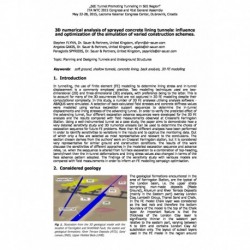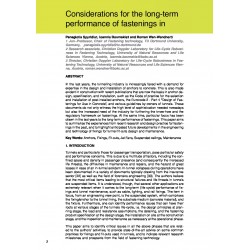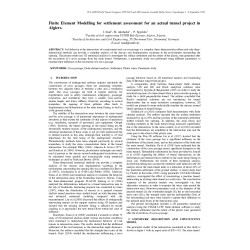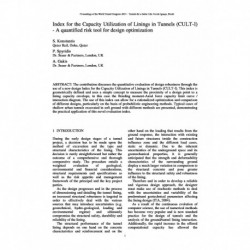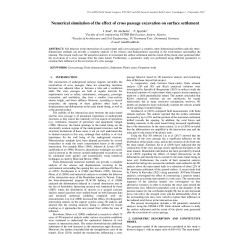No document
Search & filter
Search for a publication
Search & filter
List of products by author: P. Spyridis
-
3D numerical analysis of sprayed concrete lining tunnels: influence and optimization of the simulation of varied...
Abstract: In tunnelling, the use of finite element (FE) modelling to determine lining stress and in-tunnel displacement is a commonly employed practice. Two modelling techniques used are two-dimensional (2D) and three-dimensional (3D) analysis, with preference being to the latter. This is to account for many of the 3D occurrences that are not captured in 2D FE modelling despite their computational...
0,00 € -
Considerations for the long-term performance of fastenings in
Abstract: In the last years, the tunnelling industry is increasingly faced with a demand for expertise in the design and installation of anchors to concrete. This is also made evident in construction with recent publications that are now the basis in anchor design, specification, and installation, such as the Code of practice for the selection and installation of post-installed anchors, the Eurocode 2 -...
0,00 € -
Finite Element Modelling for settlement assessment for an actual tunnel project
Abstract: Soil behavior at the intersection of a main tunnel and a cross passage is a complex, three-dimensional problem and only threedimensional methods can provide a complete analysis of the stresses and displacements occurring in the environment surrounding the opening. The present study uses 3D numerical analysis to investigate the surface settlement and the extent of the plastic zone generated...
0,00 € -
Index for the Capacity Utilization of Linings in Tunnels (CULT-I) - A quantified risk tool for design optimization
Abstract: The contribution discusses the quantitative evaluation of design robustness through the use of a new design Index for the Capacity Utilization of Linings in Tunnels (CULT-I). This index is geometrically defined and uses a simple concept to measure the proximity of a design point to a lining capacity envelope, in this case the Bending moment-Axial force capacity limit...
0,00 € -
Numerical simulation of the effect of cross passage excavation on surface settlement
Abstract: Soil behavior at the intersection of a main tunnel and a cross passage is a complex, three-dimensional problem and only threedimensional methods can provide a complete analysis of the stresses and displacements occurring in the environment surrounding the opening. The present study uses 3D numerical analysis to investigate the surface settlement and the extent of the plastic zone generated...
0,00 €

